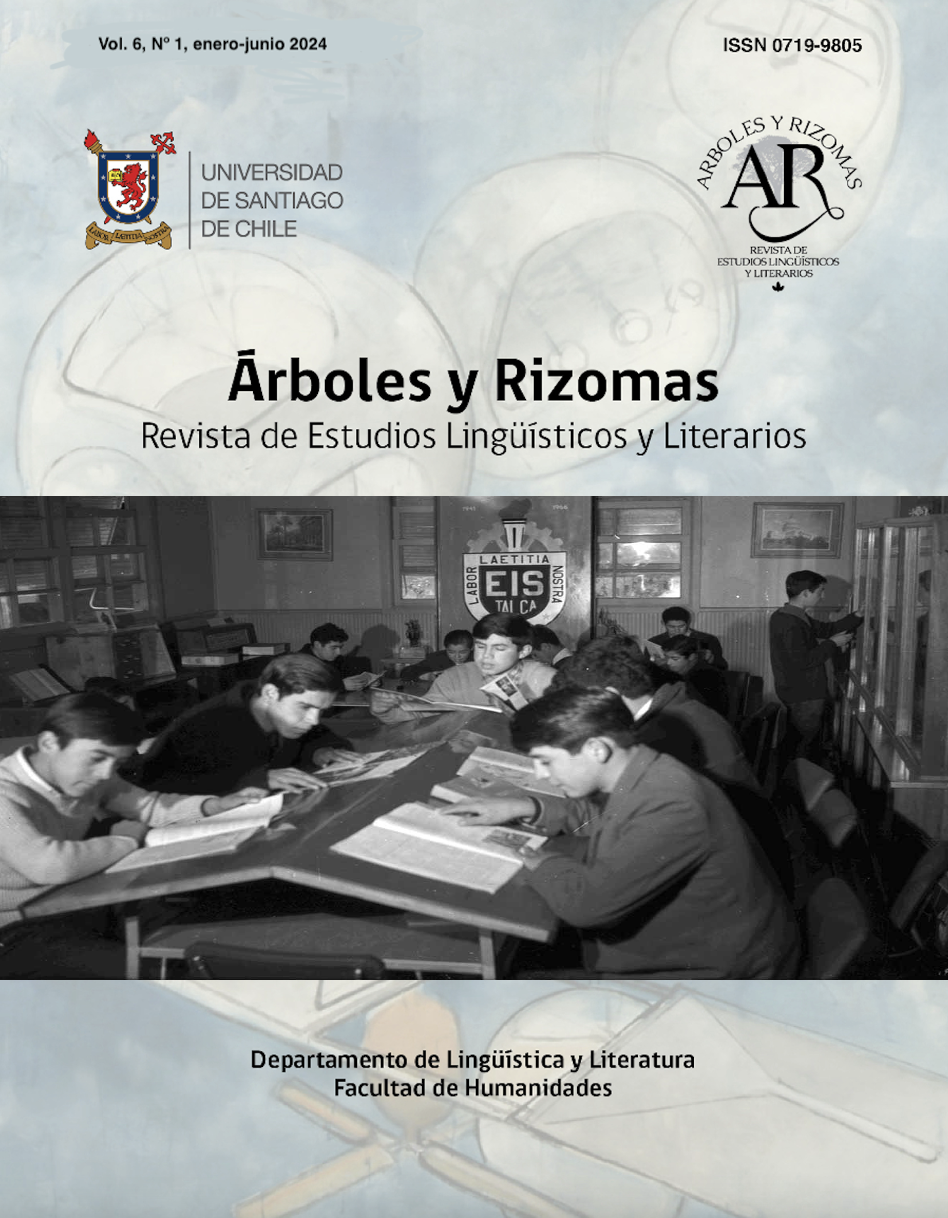Pilgrims on borders: transatlantic and transpacific reading of two stories by Chilean women travelers
DOI:
https://doi.org/10.35588/ayr.v6i1.6617Keywords:
transpacific literature, transatlantic literature, transnational literature, interculturality, pilgrimageAbstract
Taking as a background the issue of transnationality and interculturality in Latin American literature, where the different approaches to transatlantic reading have taken center stage, this article introduces a type of transpacific reading that claims that links between Asia and America are not mediated by European parameters. What is proposed here about this transpacific perspective is not simply a reflection of what has been called transatlantic literature, but a fundamentally different ethos to relate with otherness: one that escapes from hegemonic binary conceptions that divide East and West, thus characterized by an eclectic and spontaneous gaze. For this purpose, Rio de huesos (Claudia Lira, 2021), a travel story that embodies this transpacific perspective in literature, is analyzed by contrasting it with the transatlantic character in El ángel del peregrino (Violeta Quevedo, 1935). These are two pilgrimage stories written by Chilean women that are distanced not only geographically and temporally, but also in their intercultural attitude to connect with otherness.
Downloads
References
Amaro, L. & Mayne-Nicholls, A. (2014). Una travesía diferente. Peregrinaje religioso y escritura de mujeres en Chile. Meridional, 3, 131-152. https://meridional.uchile.cl/index.php/MRD/article/view/33388
Carrión, J. (2010). Las estructuras y el viaje (hacia un nuevo hispanismo). En J. Ortega (Ed.), Nuevos hispanismos interdisciplinarios y trasatlánticos (pp. 239-251). Iberoamericana.
Fernández de Alba, F. (2011). Teorías de navegación: los métodos de los estudios transatlánticos. Hispanófila, 161, 35-58. https://dialnet.unirioja.es/servlet/articulo?codigo=3925466
García de Cortázar, J. (1994). El hombre medieval como “homo viator”. Peregrinos y viajeros. En J. I. de la Iglesia (Ed.), IV Semana de Estudios Medievales (pp. 11-30). Instituto de Estudios Riojanos.
Herrera, B. (2013). Entre Atlántico y Pacífico: historias y espejos americanos. En O. Ette, W. Mackenbach & H. Nitschack (Ed.), TransPacífico, Conexiones y convivencias en AsiAméricas (pp. 179-190). Tranvía.
Lira Latuz, C. (2021). Río de huesos. Palabra editorial.
Montt, M. & Iacobelli, P. (2020). Encuentros con Asia: Una reflexión en torno a la historiografía latinoamericana desde la cuenca del Océano Pacífico. Historia 396, 10, 179-204. https://dialnet.unirioja.es/servlet/articulo?codigo=9416767
Quevedo, V. (1935). El ángel del peregrino. Escuela Tipográfica La Gratitud Nacional.
Quiroz Arriagada, F. (2020). Interculturalidad en contextos de Hipermodernidad: El desafío del Otro en la alienación del mundo globalizado. En S. Brito, L. Basualto & R. Urrutia (Ed.), Interculturalidad(es) y migraciones. Desafíos desde una ciudadanía emergente (pp. 47-66). Aún creemos en los sueños editorial.
Scarano, L. (2020). Nuevos hispanismos transatlánticos en el siglo XXI. Inti: Revista de literatura hispánica, 91, 109-120.https://dialnet.unirioja.es/servlet/articulo?codigo=7343559
Schöning, U. (2006). La internacionalidad de las literaturas nacionales. Observaciones sobre la problemática y propuestas para su estudio. En D. Romero López (Ed.), Naciones literarias (pp. 305-340). Anthropos.https://dialnet.unirioja.es/servlet/articulo?codigo=2034870
Torres-Rodríguez, L. (2019). Orientaciones transpacíficas: la modernidad mexicana y el espectro de Asia. University of North Carolina Press.https://www.academia.edu/38828126/Orientaciones_transpaci_ficas_la_modernidad_mexicana_y_el_espectro_de_Asia_2019_Libro
Downloads
Submitted
2024-02-03Published
Issue
Section
License
Copyright (c) 2024 Andrés Tapia Domínguez

This work is licensed under a Creative Commons Attribution 4.0 International License.






